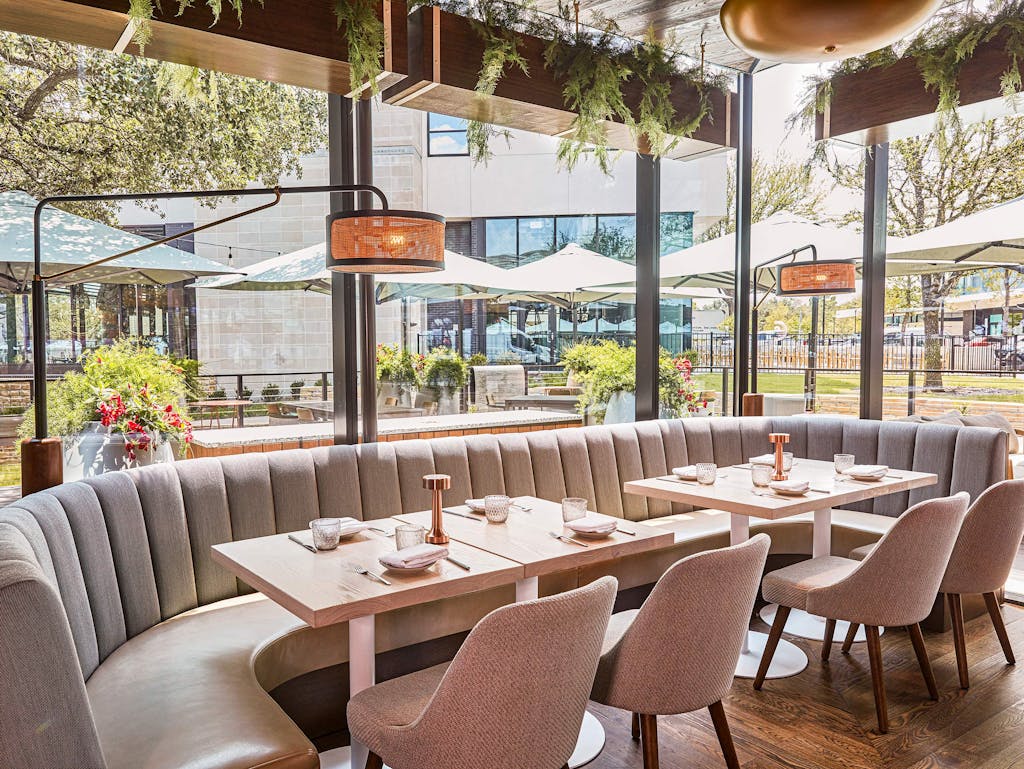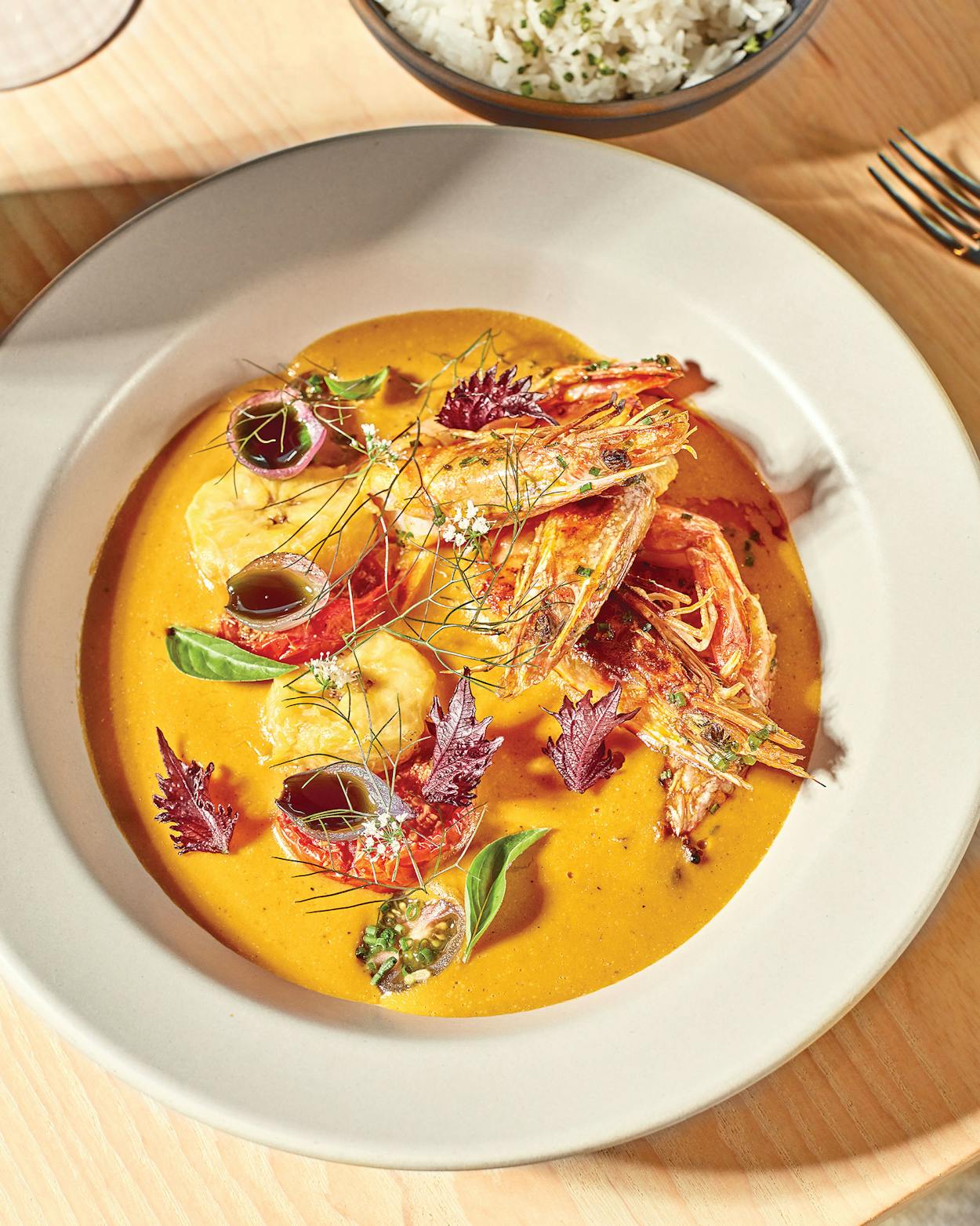Featured in the Dallas City Guide
Discover the best things to eat, drink, and do in Dallas with our expertly curated city guides. Explore the Dallas City Guide
Junior Borges never planned to become a chef. If twenty years ago you had asked the now forty-year-old Brazilian what occupation he intended to pursue, he probably would have said dietitian. “Food was a big part of my life,” he admits, but back then, in his country, cooking wasn’t seen as a worthwhile career path. “Medicine, law, engineering—that meant success,” he says. He studied nutrition, thinking he could channel his love of food into a job advising clients on healthy eating. But it didn’t satisfy him, and he ultimately dropped out of school. At loose ends, he decided in 1999 to take a long vacation and visit his sister, who was living in the city of dreams: New York.
He ended up getting a work permit—he’s now a U.S. citizen—but he still felt directionless. Then one day he was riding the subway with his mom, who had moved to New York to live with his sister. As the train lurched along, she pointed to an ad for a cooking school and said, “You love to eat and you’re always in the kitchen. Why don’t you do that?” The proverbial light bulb switched on. In the restaurant-obsessed United States, cooking could be a profession.
From that moment, Borges had a purpose. He started learning English and studying everything he could find on cooking and dining. “I would go to this big bookstore in Union Square and sit cross-legged on the floor and read cookbooks,” he remembers. He couldn’t afford culinary school, so he watched chefs with television shows. “Emeril Live and Molto Mario were my favorites,” he says. Kitchen scientist Alton Brown was Borges’s go-to for technique.
After he honed his chops, he persuaded an upscale restaurant to let him work for free, then moved on to paying jobs. One of his biggest thrills came when the late Anthony Bourdain (at that time the host of the Travel Channel’s No Reservations) visited Diner, in Brooklyn, a popular restaurant where Borges was working. “He was out back, smoking a cigarette,” says Borges, “and I just went up to him and asked, ‘Do you think this is a good place? What do you really think, now that there are no cameras?’ He put his hand on my shoulder and said, ‘You’re in the right place at the right time.’ ”


His confidence boosted, Borges eventually attended and graduated from what was then called the French Culinary Institute. After thirteen years in New York, which included stints at acclaimed restaurants A Voce and Amali, he was tapped by Austin chef Tyson Cole, the founder of innovative Japanese restaurant Uchi, to help open the restaurant’s third location, in Dallas. That eventually led to an opportunity to head up cutting-edge FT33, in the nearby Design District, followed by other upper-echelon positions. But in the back of Borges’s mind was a growing conviction: he didn’t want to work for somebody else. “I always had this dream to do my own place,” he says. He even made a sketch of his ideal kitchen in a notebook.
Now, two decades after his arrival in New York, Borges finds himself in charge of a sleek North Dallas restaurant that is his alone, one that serves the cuisine of his home country. Turns out he never did consult his sketch, but “funny enough,” he told me later, Meridian’s roomy open kitchen is strikingly similar. From his vantage point, he can see both the smooth, modern lines of the eighty-seat dining room and, through a glass wall, the shady outdoor terrace.
The diners in those seats are the kind who in pre-pandemic times would have eagerly visited Brazil but who are now happy to have an armchair tour, dinner included. They’re in for a horizon-expanding experience. The menu reflects Brazil’s wildly varied Indigenous and immigrant cuisines, but it is ambitious too, on a par with the bills of fare at leading restaurants such as Lasai, in Rio de Janeiro, and Mocotó, in São Paulo. “Trips I made to Brazil the last few years opened my eyes,” Borges says. “What they’re doing is traditional but also extremely modern.”
Though highly original, the menu at Meridian feels friendly and approachable. I would strongly recommend that you start with something that is a pure Brazilian tradition: the Grilled “Beach Cheese” on a Stick. A favorite of Borges’s, the grill-kissed logs of mild, springy queijo coalho are a crazy-popular snack sold by roaming oceanside vendors. Here, the tidy skewers of cheese are placed on a small brazier, drizzled with honey, and sprinkled with oregano. They arrive trailing the heavenly scent of glowing rosemary twigs.
Other snacks and small plates are more elevated. One I loved was a novel treatment of beef tartare that features finely chopped Wagyu jazzed up with an umami bomb of black truffles, shavings of country ham, assorted dried seafoods, and sherry vinegar. The meat is then formed into individual bites and tucked into dark green shiso leaves. “Hmm,” said my friend Ron as he dutifully munched one of the sturdier sawtooth-edged leaves. “It’s kind of like French-kissing a cat.”
Less spiky, the Kohlrabi Caesar is as lovely as a flower. The fat, round vegetable has been miraculously planed into graceful curls of freshness sprinkled with aged pecorino and dressed with an anchovy-zapped aioli that’s made with a sunny-side-up egg instead of a raw one (“So much more flavorful,” says Borges). Another appetizer, a spongy, nutty-brown maitake mushroom, arrives with its ample ruffly surface covered by a gossamer wrapper of lardo and finished with a classic oniony soubise.
It’s easy to get stuck on starters at Meridian, but there are other sections of the menu to explore, including pasta. Initially our foursome was surprised to see it, but as an affable, well-schooled server explained, a good portion of Brazil’s population (estimated at 15 percent) has Italian heritage. Occhi (think round ravioli) arrive plumply stuffed with pancetta and ricotta and sided by chanterelles; the fusilli verde is a comforting bowl of spinach-infused corkscrew pasta in a meaty, tomato-rich ragù.

If you just happen to be on a date or merely celebrating being alive, the menu has a couple of serious Wagyu steak choices. The one we settled on, picanha—basically a sirloin cap and a favorite cut in meat-obsessed Brazil—arrived sliced, tender, and grilled to an exact medium-rare. If more festivity is in order, there’s also a fine duck breast in a complex jus tinged with ginger and mustard seed and enriched with guava paste. For my palate, the slightly austere sauce could have been a touch fruitier—mais goiaba, por favor.
At some point, though, you definitely want to dive into Brazil’s glorious coastal cuisine, and that is where the lovely blue prawn and plantain moqueca comes in. A seafood stew, it’s made with coconut milk and a distinctive orange-red oil extracted from the fruit of the dendezeiro palm. To me, the oil’s subtle flavor bears a passing resemblance to that of saffron—very appropriate for the bouillabaisse of Brazil.
Once you’ve wandered around this 3.3-million-square-mile country by way of Borges’s menu, you’ll likely be ready for the homey, humble, carby comfort food that may well be the most ubiquitous dish in the country, and that is farofa. Made from gnarly cassava root (a.k.a. yuca), it comes off a bit like fine-textured grits. Here Borges pairs it with a hearty, porky calabresa sausage and a sauce of bright green, onionlike pickled ramps. It is one of the simplest, most soulful dishes on the menu.
But if moqueca and farofa exemplify something distinctively—even patriotically—Brazilian on Meridian’s menu, two desserts may well be the most personally meaningful for Borges. The first is an extravagant chocolate cake, rich with layers of hazelnut praline, chocolate mousse, and a sweetened-condensed-milk ganache. It was inspired by the beloved Brazilian candies called brigadeiros, which are small, cocoa-powder fudge balls covered in chocolate sprinkles. “For every birthday party,” Borges says, “my mother would put them out as treats in little cups.”
The second is the bolo de aipim. “That simple cake was always on my grandmother’s table,” Borges says, at the ready for sugar-seeking grandchildren. Here, he has given the recipe star treatment, turning the cake, made with freshly grated yuca and coconut flakes, into adorable bite-size cubes iced with lime ganache and nestled in a sumptuous custard.
He’s been pleased with customers’ response; his take on his grandmother’s humble cake is one of the restaurant’s signature desserts. But over and above that gratification, the approval has answered a question he had wrestled with constantly: What balance should he strike between Brazil and the U.S.? Between nostalgia and ambition? After all, he had spent exactly half of his life in each country. And then one day he had his answer, when a Brazilian customer turned to him and said, “It tastes like home, but different.” After that, he stopped worrying. He knew he had it right.
Meridian
5650 Village Glen Dr, Dallas
469-659-6382
D Tue–Sun.
$$$
Opened May 11, 2021
This article originally appeared in the September 2021 issue of Texas Monthly with the headline “From Brazil to Big D.” Subscribe today.
- More About:
- Pat’s Pick
- Dallas









